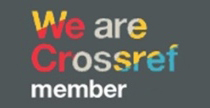INGREDIENTS OF RENDANG DALAM PENCIPTAAN KARYA FOOD PHOTOGRAPHY
DOI:
https://doi.org/10.51804/deskovi.v1i1.289Keywords:
food photography, globalisasi, makanan tradisional, minangkabau, rendangAbstract
Era globalisasi berdampak positif dan negatif yang membawa perubahan prilaku kehidupan masyarakat, seperti generasi muda lebih memilih makanan cepat saji atau junk food yang berasal dari luar negeri daripada makanan tradisional, khususnya Minangkabau. Fotografi merupakan salah satu media yang dapat digunakan sebagai langkah untuk melestarikan, menjaga, memperkenalkan, dan mempromosikan sebuah objek rempah-rempah yang merupakan bahan dasar dalam masakan Rendang dalam bentuk karya food photography. Jenis fotografi yang digunakan yaitu food photography yang merupakan spesialisasi dari commercial photography bertujuan agar memperlihatkan bahan-bahan masakan atau makanan Rendang agar terlihat menarik yang didukung dengan lighting, komposisi, penataan makanan. Metode penciptaan karya seni ini menggunakan metode konsorsium seni meliputi persiapan, elaborasi, sintesis, realisasi konsep, penyelesaian. Dengan konsep ini diharapkan rempah-rempah dan bahan-bahan dalam masakan Rendang bisa dikenal publik secara luas sehingga menjaga eksistensinya serta tercipta rasa bangga dan ketertarikan terhadap makanan tradisional khusunya Rendang yang menjadi populer di kalangan generasi muda daripada makanan atau masakan luar. Ingredients of Rendang dalam Penciptaan Karya Food Photography ini sebagai langkah awal mendorong fotografer atau pembaca untuk membuat karya food photography dari setiap daerah-daerah yang ada di Indonesia agar makanan atau masakan tradisonal di Indonesia dapat dikenal oleh masyarakat luas.
The era of globalization has a positive and negative impact that has brought changes in people's life behavior, as the younger generation prefers fast food or junk food originating from other country rather than traditional foods, especially Minangkabau. Photography is one of the media that can be used as a step to preserve, maintain, introduce and promote an object of seasoning which is the basic ingredient in Rendang cuisine in the food photography. The type of photography used is food photography which is a specialty of commercial photography aimed at showing Rendang food or food ingredients to make it look attractive, supported by lighting, composition, food arrangement. The method of creating this work using the art consortium method includes preparation, elaboration, synthesis, realization of concepts, completion. With this concept, it is expected that spices and ingredients in Rendang cuisine can be known to the public to maintain their existence and create a sense of pride and interest in traditional foods, especially Rendang, which is to be more popular among the younger generation rather than food from other country. Ingredients of Rendang in the Creation of Food Photography Works as a first step encourages photographers or readers to create food photography works from every region in Indonesia so that food or traditional cuisine in Indonesia can be known in all country.
Downloads
References
Burhanuddin. (2014). Fotografi. Yogyakarta: Graha Ilmu.
Empatrana. (2011). Food Photography Made Easy. Jakarta: Kompas Gramedia.
Hoddinott, R. (2013). Lense for Digital SLRs. Jakarta: Elex Media Komputindo.
Kiki Photography. (2011). Tips Praktis Bisnis Fotografi. Jakarta: Grasindo.
Manna, L. (2005). Digital Food Photography. Boston: Course Technology.
Motoyuk.com. (2013). My Photography Compendium Series. Jakarta: Kompas Gramedia.
Sudarman, I. K. (2014). Fotografi. Yogyakarta: Graha Ilmu.
Sugiarto, A. (2014). Seni Digital. Jakarta: Elex Media Komputindo.
Tjin, E. (2011). Lighting itu Mudah! Jakarta: Bukune.
Downloads
Published
How to Cite
Issue
Section
License
With the receipt of the article by DADJ Editorial Board and the decision to be published, the copyright regarding the article will be transferred to DADJ. The copyright transfer form can be downloaded here.
DADJ has the right to multiply and distribute the article and every author is not allowed to publish the same article that was published in this journal.

DESKOVI: Art and Design Journal is licensed under a Creative Commons Attribution 4.0 International License.
Under the following terms:
Attribution — You must give appropriate credit, provide a link to the license, and indicate if changes were made. You may do so in any reasonable manner, but not in any way that suggests the licensor endorses you or your use.






